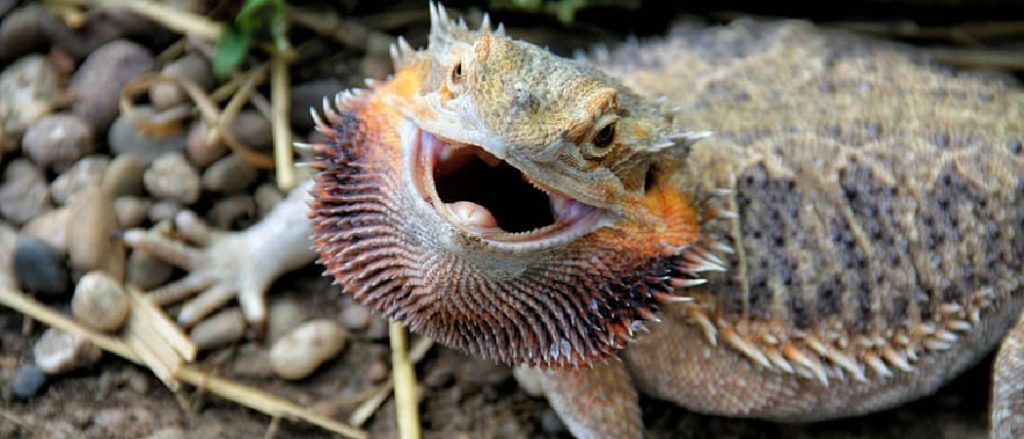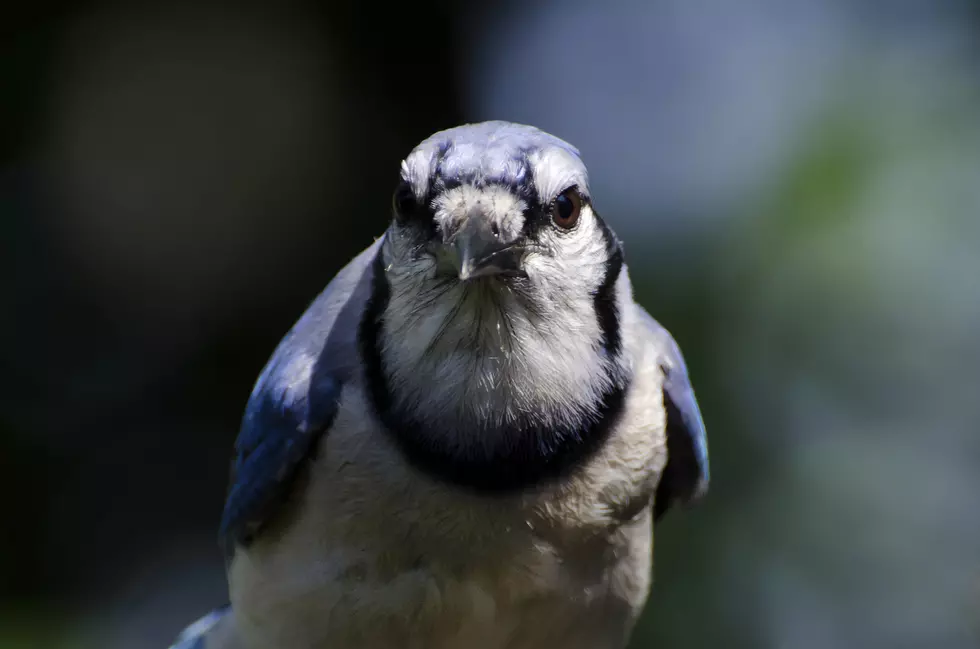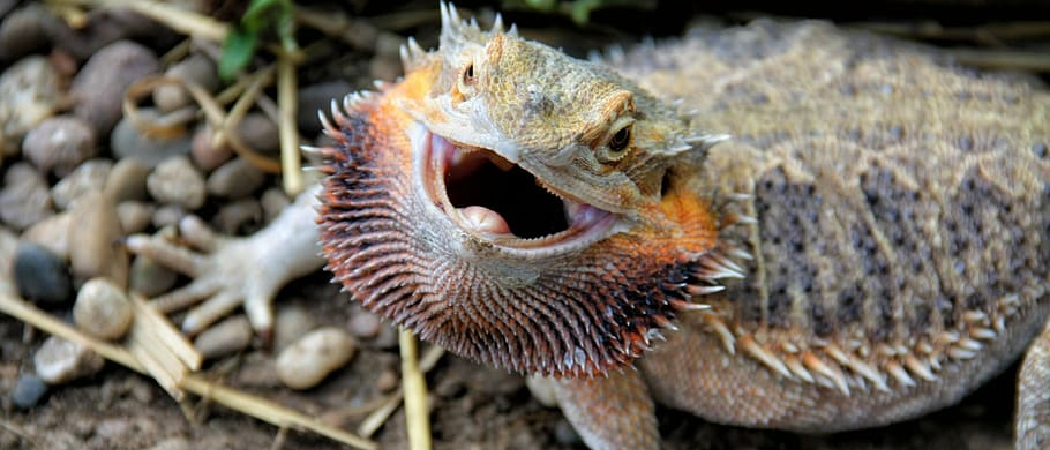Bearded dragons open their mouth to regulate their body temperature and to display aggression or submission. Bearded dragons, scientifically known as Pogona vitticeps, are fascinating reptiles that have become popular pets due to their unique appearance and manageable size.

These reptiles are native to the arid regions of Australia, and they have developed various behaviors to adapt to their environment. One intriguing behavior that is commonly observed in bearded dragons is the opening of their mouth. While it may seem alarming to us humans, this behavior serves essential purposes for these reptiles.
We will explore the reasons why bearded dragons open their mouth and what it signifies in their world.

Credit: emmasbibliotreasures.com
Reasons For Bearded Dragons Opening Their Mouth
Bearded dragons open their mouth for various reasons, including regulating body temperature, displaying dominance, or as a sign of distress. Understanding their behavior can help ensure their well-being.
One of the most common reasons why bearded dragons open their mouth is for thermoregulation. Bearded dragons are ectothermic reptiles, which means that they rely on external sources of heat to regulate their body temperature. By opening their mouth, they are able to increase the airflow and cool down their body.
Another reason why bearded dragons open their mouth is to display aggression or threat. When bearded dragons feel threatened or territorial, they may open their mouth wide, puff up their beard, and hiss to intimidate potential predators or competitors. This behavior is a defensive mechanism to ward off any potential threats and establish dominance.
Stress Or Illness
Bearded dragons may also open their mouth as a sign of stress or illness. It could be a response to a stressful environment, improper handling, or discomfort caused by an underlying health issue. If you notice your bearded dragon frequently opening its mouth in a labored or abnormal manner, it is important to monitor its behavior and consult a veterinarian if necessary.

Credit: humenhoid.medium.com
Thermoregulation
Bearded dragons open their mouth as a form of thermoregulation, adjusting their body temperature to stay comfortable and healthy. It helps them release excess heat and cool down, ensuring their well-being.
Basking Behavior
When it comes to thermoregulation, bearded dragons have some fascinating behaviors. One of these is their basking behavior, which involves opening their mouth. This behavior plays a crucial role in maintaining their body temperature.
Bearded dragons are ectothermic reptiles, which means that they rely on external sources of heat to regulate their body temperature. Basking in the sun or under heat lamps allows them to absorb and store heat, which is essential for their overall health and well-being.
When a bearded dragon opens its mouth while basking, it is not a sign of aggression or stress. Instead, it is a way for them to increase heat transfer from their environment. By opening their mouth, they increase the surface area exposed to the heat source, allowing for more efficient warming of their bodies.
The mouth of a bearded dragon is lined with a thin and highly vascularized tissue called the oral mucosa. This tissue has a high blood supply, and by opening their mouth, bearded dragons optimize heat absorption through this vascular network.
So, when you see your bearded dragon with its mouth open while basking, remember that it’s just their way of maximizing their exposure to heat and ensuring they stay warm and comfortable.
Cooling Down
While basking helps bearded dragons warm up, they also have a mechanism for cooling down. Opening their mouth is one of the ways they regulate their body temperature when it becomes too hot. This behavior, known as gular flapping, allows them to dissipate excess heat and avoid overheating.
When a bearded dragon opens its mouth to cool down, it increases the surface area for evaporative cooling. By flapping their loose neck skin, they promote air circulation and enhance the evaporation of moisture from their oral mucosa. This process cools down their body temperature, ensuring they don’t overheat in excessively warm environments.
Gular flapping is especially common when the ambient temperature rises above the bearded dragon’s optimal range. It’s their way of self-regulating and avoiding heat stress. So, if you see your bearded dragon opening its mouth and visually flapping its neck, be assured that it’s a natural behavior aimed at maintaining a comfortable body temperature.
Threat Display
The threat display is a common behavior observed in bearded dragons when they feel threatened or challenged. This display involves the bearded dragon opening its mouth wide, bobbing its head up and down rapidly, and puffing out its beard. This behavior is essential for their survival and is used as a warning to potential threats or rivals.
Defense Mechanism
One of the primary reasons why bearded dragons open their mouth is to protect themselves from potential harm. When they sense a threat, such as a predator or a human approaching too closely, they engage in the threat display to show that they are not an easy target. By opening their mouth wide and displaying their beard, they are trying to intimidate the threat and communicate that they are willing to defend themselves if necessary.
Additionally, the act of bobbing their head up and down rapidly can be seen as a warning signal. It is a way for bearded dragons to establish their dominance and communicate their readiness to engage in a fight if needed. This behavior can often deter predators or rival bearded dragons from initiating an attack, as it indicates the potential for a vigorous defense.
Territorial Displays
Bearded dragons are known to be territorial creatures, and they use the threat display as a way to defend their territory against intruders. Opening their mouth wide, puffing out their beard, and bobbing their head up and down are all visual cues to indicate ownership and dominance over a particular area. By displaying such behavior, they aim to discourage other bearded dragons or animals from encroaching upon their territory.
Furthermore, the display of their vibrant and expanded beard is a visual representation of their strength and readiness to protect their territory. The vibrant colors of the beard act as a warning sign to potential intruders, indicating that a confrontation may lead to aggressive behavior. This territorial defense mechanism ensures that bearded dragons can establish and maintain their boundaries, and it serves as a crucial aspect of their survival in the wild.
Signs Of Stress Or Illness
Bearded dragons open their mouth as a sign of stress or illness. It’s their way of releasing heat and regulating their body temperature, but it can also indicate respiratory issues or discomfort. Monitoring their behavior can help identify potential health concerns.
Respiratory Infections
One of the common reasons why bearded dragons open their mouths is because of respiratory infections. Respiratory infections in bearded dragons can be caused by a variety of factors such as poor husbandry conditions, low temperatures, or a weakened immune system. When a bearded dragon has a respiratory infection, they may open their mouth to breathe more easily as they try to clear their airways. This behavior is often accompanied by other symptoms such as wheezing, coughing, or a runny nose. Prompt veterinary care is essential to treat respiratory infections and prevent them from progressing into more serious health issues.
Mouth Rot
Another potential cause of bearded dragons opening their mouths is mouth rot, also known as infectious stomatitis. Mouth rot is a bacterial infection that affects the mouth, gums, and throat of reptiles. It can be caused by poor oral hygiene, injuries to the mouth, or a compromised immune system. When a bearded dragon has mouth rot, they may open their mouth in an attempt to alleviate pain or discomfort. Other signs of mouth rot include swollen gums, drooling, and bad breath. Immediate veterinary attention is crucial to treat mouth rot and prevent it from spreading to other parts of the body.
Foreign Body
Sometimes, bearded dragons may open their mouths if they have a foreign body stuck in their oral cavity. This could be a small object, a piece of substrate, or even a prey item that hasn’t been properly swallowed. When a foreign body is present, the bearded dragon may exhibit signs of distress and try to dislodge it by opening their mouth repeatedly. It’s important to check your bearded dragon’s mouth for any obstructions and seek veterinary assistance if necessary. Trying to remove a foreign object on your own may cause further injury to your pet.
Dental Issues
Bearded dragons can also exhibit mouth-opening behavior due to dental issues. Dental problems in these reptiles can range from overgrown or misaligned teeth to tooth decay or abscesses. When a bearded dragon experiences dental pain or discomfort, they may open their mouth in response. Other signs of dental issues include difficulty eating, drooling, or a decrease in appetite. Regular veterinary check-ups and proper oral hygiene can help prevent and address dental problems in bearded dragons. In conclusion, there are several reasons why bearded dragons may open their mouths, and it’s important for owners to be aware of these potential signs of stress or illness. Respiratory infections, mouth rot, foreign bodies, and dental issues are just a few examples of the underlying health problems that can cause bearded dragons to exhibit this behavior. If you notice your bearded dragon opening its mouth frequently, it’s best to consult a reptile veterinarian to determine the cause and provide appropriate treatment. Early detection and intervention can greatly improve the chances of a positive outcome for your beloved pet.

Credit: hudsonvalleypost.com
Frequently Asked Questions Of Why Do Bearded Dragons Open Their Mouth
Why Does My Bearded Dragon Hold Its Mouth Open?
Bearded dragons hold their mouth open to regulate body temperature and convey different emotions like stress or threat.
How Do I Know If My Bearded Dragon Is Happy?
To determine if your bearded dragon is happy, observe its behavior. Look for signs such as an alert and curious attitude, regular eating and drinking, active movement, bright coloration, and a relaxed body posture. A content and thriving bearded dragon indicates a happy pet.
How Do I Know If My Bearded Dragon Is Mad?
To know if your bearded dragon is mad, look for signs like puffing up their beard, hissing, aggressive body posture, or biting. Also, watch for aggressive behavior towards other dragons or humans. If you notice these signs, it’s best to give your dragon some space and consult a reptile expert for advice.
Why Is My Bearded Dragon Glass Surfing?
Bearded dragons glass surf due to stress or boredom. They might be trying to escape their enclosure or seeking attention. Providing proper enrichment, like toys and hiding spots, and ensuring a suitable habitat can help alleviate this behavior.
Conclusion
Understanding why bearded dragons open their mouth is essential for their health and well-being. It can be a sign of various behaviors such as basking, regulating body temperature, and even stress or illness. By closely observing your bearded dragon’s behavior and providing proper care, you can ensure a happy and healthy pet.
So next time you notice your bearded dragon opening its mouth, you’ll have a better understanding of what it may be trying to communicate.

